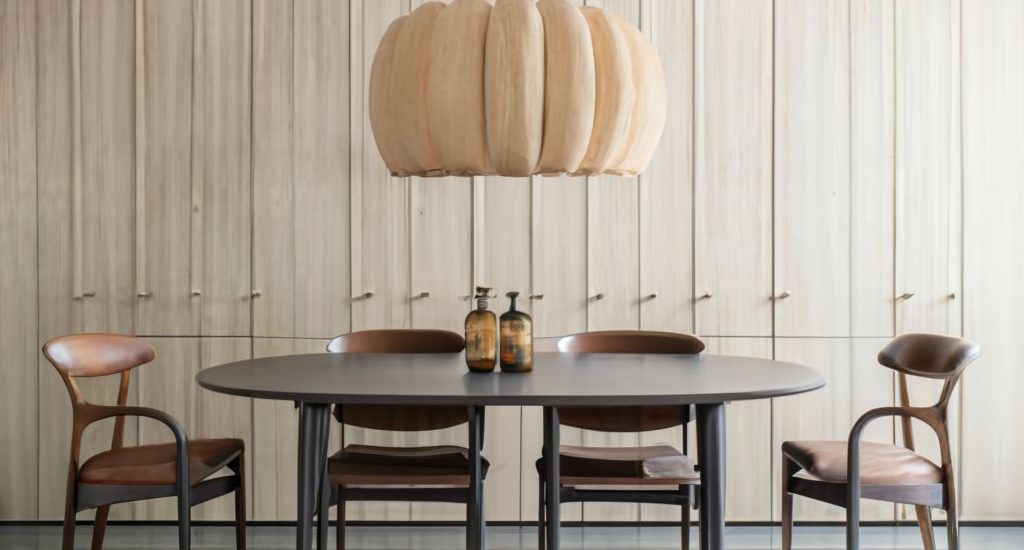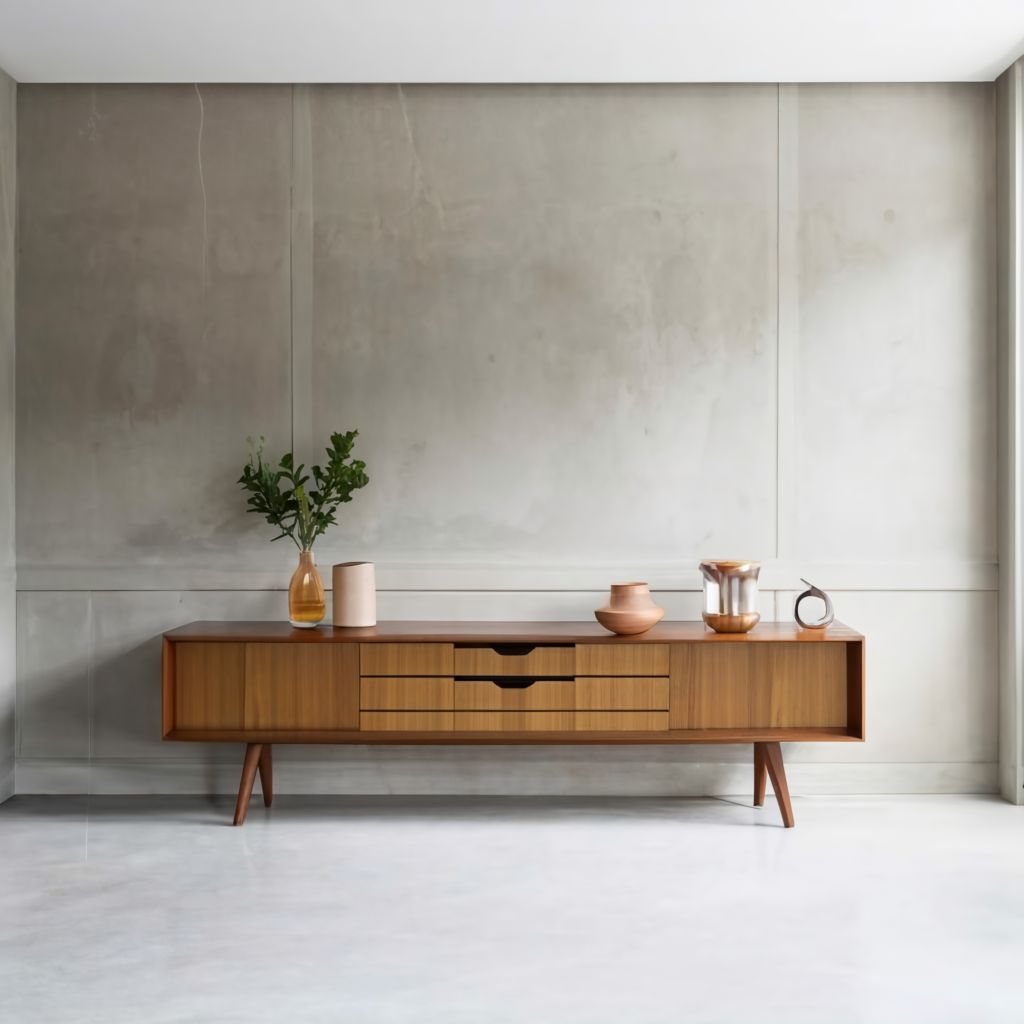- 20/02/2024
- Posted by: webmaster
- Category: Uncategorised

Have you ever felt torn between the allure of classic design and the sleek functionality of modern furniture?
In today’s rapidly evolving interior design landscape, finding the perfect balance between past and present can be a daunting task. Picture this: you’ve meticulously curated your living space, only to find that your furniture feels outdated or disjointed. It’s a frustration many of us have experienced – the clash of styles that disrupts the harmony of our homes.
But fear not, because within this frustration lies a dream – a vision of contemporary furniture seamlessly infused with classic design influences. Imagine the timeless elegance of yesteryears meeting the innovative features of today, resulting in a space that exudes both sophistication and comfort.
In this article, we delve into the realm of furniture design, exploring how modern and classic elements can coalesce to create a harmonious and stylish interior. From understanding the evolution of design to practical tips for selecting the perfect pieces, join us on a journey where tradition meets innovation in the world of furniture.

Understanding Furniture Design Evolution
Furniture design has undergone a remarkable evolution, reflecting the shifting tastes and technological advancements of each era. From the ornate carvings of centuries past to the clean lines of contemporary pieces, the journey of furniture design is rich with innovation and inspiration.
Let’s embark on a journey through time, tracing the evolution of furniture design from its earliest origins to the present day.
Understanding this evolution provides valuable insights into the emergence of blended design concepts that marry classic and modern elements.
In the annals of history, furniture served not only as functional objects but also as symbols of status and craftsmanship. Ancient civilizations crafted furniture from materials like wood, stone, and metal, adorning them with intricate carvings and elaborate embellishments. These pieces were not merely utilitarian but works of art in their own right, reflecting the cultural and societal values of their time.
As the centuries progressed, furniture design underwent various stylistic shifts, from the opulence of the Baroque and Rococo periods to the simplicity of the Arts and Crafts movement. Each era brought its own aesthetic sensibilities and design principles, shaping the furniture of the time.
Fast forward to the modern age, and we find ourselves amidst a design renaissance – a time where boundaries blur, and innovation thrives. Contemporary furniture designers draw inspiration from the past while embracing the technologies and materials of today, resulting in pieces that seamlessly blend classic charm with modern functionality.
Exploring Classic Design Influences:
Classic design influences serve as the foundation upon which contemporary furniture finds its inspiration. From the graceful curves of Art Nouveau to the geometric precision of Art Deco, the echoes of past design movements reverberate through modern furniture pieces.
Let’s delve into the key elements of classic design that continue to shape contemporary furniture aesthetics.
Understanding these influences allows us to appreciate the timeless appeal and enduring beauty of classic design.
Classic design is characterized by its emphasis on proportion, symmetry, and craftsmanship. It prioritizes elegance and refinement, drawing inspiration from nature, history, and cultural motifs. Elements such as ornate detailing, graceful curves, and rich materials define classic furniture pieces, infusing them with a sense of luxury and sophistication.
One of the most influential periods in classic design history is the Renaissance, a time of artistic and cultural rebirth in Europe. Renaissance furniture reflects the era’s fascination with symmetry, balance, and proportion, featuring intricately carved motifs and sumptuous upholstery.
Moving forward, the neoclassical style emerged as a reaction to the ornate excesses of the Baroque and Rococo periods. Neoclassical furniture drew inspiration from ancient Greek and Roman design, favoring clean lines, geometric forms, and understated ornamentation.
In the 20th century, movements such as Art Nouveau and Art Deco introduced new design languages that continue to influence contemporary aesthetics. Art Nouveau celebrated the sinuous beauty of nature, with organic forms and flowing lines adorning furniture pieces. Meanwhile, Art Deco embraced geometric shapes, bold colors, and luxurious materials, epitomizing the glamour and sophistication of the Roaring Twenties.
Envision infusing your living space with the timeless elegance and refined craftsmanship of classic design. By understanding these influences, you can select contemporary furniture pieces that pay homage to the rich heritage of the past while embracing the innovations of the present. Let’s explore how these classic design elements manifest in modern furniture creations.
Characteristics of Contemporary Furniture with Classic Influences:
Contemporary furniture with classic influences embodies a unique blend of old-world charm and modern functionality. These pieces seamlessly integrate timeless design elements with innovative materials and techniques, resulting in furniture that is both visually captivating and practical.
Let’s explore the defining characteristics of contemporary furniture that incorporate classic design influences.
Understanding these characteristics helps us identify and appreciate the fusion of past and present in modern furniture pieces.
- Sleek Lines and Clean Silhouettes: Contemporary furniture often features sleek, minimalist designs with clean lines and smooth surfaces. While classic influences may add ornamental details, they are typically streamlined to maintain a modern aesthetic.
- Quality Craftsmanship: Just like their classic counterparts, contemporary furniture pieces with classic influences prioritize craftsmanship and attention to detail. From hand-carved accents to meticulously upholstered surfaces, these pieces showcase the skill and expertise of artisans.
- Blend of Materials: Modern materials such as glass, steel, and molded plastics are often combined with traditional materials like wood and leather. This fusion of materials allows for innovative design possibilities while retaining a sense of timeless elegance.
- Versatile Functionality: Contemporary furniture with classic influences is designed to meet the demands of modern living. Whether it’s a convertible sofa bed or a modular storage system, these pieces prioritize versatility and practicality without sacrificing style.
- Subtle Nods to the Past: While contemporary furniture may have a distinctly modern appearance, it often incorporates subtle nods to classic design elements. This could be in the form of decorative motifs, architectural details, or reinterpretations of iconic furniture pieces from history.
By blending classic design influences with contemporary sensibilities, these furniture pieces offer a harmonious balance of tradition and innovation. They serve as focal points in any interior space, adding depth, character, and timeless appeal.
Benefits of Blending Modern and Classic Design:
The marriage of modern and classic design in contemporary furniture offers a plethora of benefits, both aesthetic and practical. By seamlessly integrating elements from different eras, these pieces create a cohesive and visually stunning environment while enhancing the functionality of your living space.
Let’s delve into the advantages of incorporating classic design influences into contemporary furniture.
Understanding these benefits highlights the value of embracing a blended approach to furniture design.
- Timeless Elegance: By infusing contemporary furniture with classic design influences, you can achieve a timeless elegance that transcends fleeting trends. These pieces exude sophistication and refinement, ensuring that your home decor remains stylish for years to come.
- Versatile Aesthetic Appeal: Contemporary furniture with classic influences has a versatile aesthetic appeal that complements a wide range of interior styles. Whether your decor is modern, traditional, or eclectic, these pieces seamlessly integrate into any setting, adding depth and character to the space.
- Enhanced Comfort and Functionality: While classic design elements lend a sense of beauty and charm to contemporary furniture, modern innovations ensure optimal comfort and functionality. From ergonomic seating solutions to innovative storage solutions, these pieces are designed to meet the demands of modern living without compromising on style.
- Personalized Expression: Blending modern and classic design allows for a personalized expression of style and taste. Whether you prefer the timeless allure of antique-inspired furnishings or the sleek sophistication of contemporary design, you can curate a space that reflects your unique personality and aesthetic sensibilities.
- Longevity and Durability: Contemporary furniture with classic influences is often crafted with high-quality materials and superior craftsmanship, ensuring longevity and durability. These pieces withstand the test of time, becoming cherished heirlooms that can be passed down through generations.
By embracing the benefits of blending modern and classic design, you can create a harmonious and stylish interior that is both inviting and functional. From the timeless elegance of classic aesthetics to the innovative features of contemporary design, these furniture pieces offer the best of both worlds.
Practical Tips for Selecting Contemporary Furniture with Classic Design Influences:
Choosing the perfect contemporary furniture pieces with classic design influences requires careful consideration and attention to detail. From evaluating aesthetics to ensuring functionality, these practical tips will guide you in selecting furniture that seamlessly blends the best of both worlds.
Let’s explore actionable tips for selecting contemporary furniture with classic influences.
We’ll provide specific criteria and considerations to help you make informed decisions when choosing furniture pieces.
These tips are applicable whether you’re furnishing a new space or updating an existing one.
You can apply these tips when shopping for furniture online, in stores, or working with interior designers.
- Define Your Design Aesthetic: Start by defining your design aesthetic and identifying the specific classic design influences you’re drawn to. Whether it’s the ornate detailing of the Baroque period or the clean lines of mid-century modernism, having a clear vision will streamline your furniture selection process.
- Consider Scale and Proportion: Pay attention to the scale and proportion of the furniture pieces in relation to your space. Oversized furniture can overwhelm a room, while undersized pieces may feel out of place. Aim for a harmonious balance that complements the scale of your space.
- Evaluate Material Quality: Look for furniture crafted from high-quality materials that withstand the test of time. Solid wood, genuine leather, and durable upholstery fabrics are all indicators of quality craftsmanship. These materials not only enhance the aesthetic appeal of the furniture but also ensure longevity and durability.
- Assess Comfort and Functionality: While aesthetics are important, don’t overlook comfort and functionality. Test out seating options to ensure they provide adequate support and comfort. Consider the functionality of storage solutions and multi-purpose furniture pieces, especially in smaller living spaces.
- Harmonize with Existing Decor: Take into account the existing decor and color palette of your space when selecting furniture. Choose pieces that harmonize with the overall aesthetic while adding depth and visual interest. Consider how different materials, textures, and finishes interact with your existing decor elements.
- Seek Timeless Design Elements: Look for timeless design elements that transcend trends and fads. Classic motifs, architectural details, and iconic furniture silhouettes can add a sense of history and heritage to your space, anchoring it in timeless elegance.
By following these practical tips, you can confidently select contemporary furniture with classic design influences that elevate your space with timeless beauty and modern functionality.
Showcase of Inspirational Furniture Pieces:
Let’s explore a curated selection of contemporary furniture pieces that beautifully embody the fusion of modern and classic design influences. From statement-making sofas to elegant dining sets, these inspirational pieces showcase the endless possibilities of blending past and present in interior decor.
We’ll highlight specific examples of contemporary furniture with classic influences, demonstrating how each piece combines timeless aesthetics with modern functionality.
By showcasing these inspirational pieces, we aim to inspire readers and spark their creativity when furnishing their own spaces.
- Eames Lounge Chair and Ottoman: A timeless icon of mid-century modern design, the Eames Lounge Chair and Ottoman seamlessly blend classic elegance with modern comfort. Designed by Charles and Ray Eames in 1956, this iconic piece features a molded plywood shell, sumptuous leather upholstery, and a sleek aluminum base. Its timeless appeal and ergonomic design make it a beloved classic in contemporary interiors.
- Tulip Dining Table and Chairs: Designed by Eero Saarinen in 1957, the Tulip Dining Table and Chairs epitomize the sleek simplicity of mid-century modernism. With its pedestal base and smooth, organic lines, this iconic set adds a touch of elegance to any dining space. Crafted from durable materials like fiberglass and aluminum, it offers both style and functionality for modern living.
- Chesterfield Sofa: A symbol of classic British design, the Chesterfield sofa exudes timeless sophistication and charm. With its deep button tufting, rolled arms, and luxurious leather upholstery, this iconic piece adds a touch of old-world elegance to contemporary interiors. Whether in a traditional study or a modern living room, the Chesterfield sofa remains a timeless statement piece.
- Louis Ghost Chair: Designed by Philippe Starck in 2002, the Louis Ghost Chair reimagines the classic Louis XVI armchair in transparent polycarbonate. Its ghostly silhouette and minimalist design add a contemporary twist to a traditional form, making it a versatile addition to any interior space. Whether used as a dining chair or an accent piece, the Louis Ghost Chair adds a touch of modern whimsy to classic decor.
- Marcel Breuer Wassily Chair: Designed by Marcel Breuer in 1925, the Wassily Chair is a true icon of modern design. Crafted from tubular steel and leather, this groundbreaking piece exemplifies the Bauhaus principles of form following function. Its minimalist silhouette and industrial aesthetic make it a timeless addition to contemporary interiors, blending seamlessly with both classic and modern decor.
These inspirational furniture pieces demonstrate the power of blending modern and classic design influences to create a harmonious and stylish interior. Whether you’re drawn to the elegance of mid-century modernism or the timeless appeal of traditional craftsmanship, there’s a piece to suit every taste and style.
Imagine filling your home with furniture pieces that effortlessly blend classic elegance with modern flair. With these inspirational examples as a guide, you can create a space that is both inviting and sophisticated, reflecting your unique personality and style. Let’s explore how to bring your design vision to life with contemporary furniture inspired by classic influences.
Conclusion:
In the realm of interior design, the marriage of past and present has never been more captivating than in the realm of contemporary furniture inspired by classic design traditions. As we’ve explored throughout this journey, the fusion of timeless aesthetics with modern functionality offers a wealth of benefits for creating a harmonious and stylish interior space.
Let’s summarize the key takeaways from our exploration of contemporary furniture with classic design influences.
Reinforcing the value of incorporating these pieces into your home decor.
From the sleek lines of mid-century modern classics to the timeless elegance of traditional craftsmanship, each furniture piece showcased in this article represents a harmonious blend of old-world charm and contemporary flair. By seamlessly integrating classic design influences into modern furniture, we can create spaces that transcend trends and evoke a sense of timeless beauty and sophistication.
For individuals frustrated by outdated or mismatched furniture styles, the dream of achieving a harmonious and stylish interior is within reach. By selecting contemporary furniture with classic influences, you can transform your living space into a sanctuary of comfort and elegance, where past and present coexist in perfect harmony.
Whether you’re drawn to the minimalist elegance of mid-century modernism or the opulent charm of traditional craftsmanship, there’s a piece to suit every taste and style. With thoughtful consideration and attention to detail, you can curate a space that reflects your unique personality and aesthetic sensibilities.
So, as you embark on your journey to furnish and decorate your home, remember the timeless allure of blending modern functionality with classic design influences. With the right pieces and a touch of creativity, you can create a space that not only looks beautiful but also feels like home.
Picture yourself surrounded by furniture that seamlessly combines the best of past and present – a space that exudes elegance, sophistication, and comfort. With contemporary furniture inspired by classic design traditions, this dream becomes a reality. Let’s embark on this journey together and transform your vision into a stunning reality.
As you embark on your journey to furnish and decorate your home, remember the timeless allure of blending modern functionality with classic design influences. With the right pieces and a touch of creativity, you can create a space that not only looks beautiful but also feels like home.

